Top Tier CPU Air Coolers Q3 2015: 9-Way Roundup Review
by E. Fylladitakis on July 6, 2015 8:00 AM ESTThe Reeven Okeanos RC-1402
Reeven is a Taiwanese newcomer in the industry. Naturally, most people reading this probably never even heard the company name before today. The company was founded just over a year ago and currently only offers CPU coolers, fans and fan controllers. Reeven sent us their most powerful CPU cooler as well, the Okeanos (RC-1402).
The box that the Reeven comes supplied in is relatively small. Nevertheless, the protection appears adequate, with polyethylene foam protecting the cooler and the bundled items packed inside a cardboard box.
The bundle is a little crudely packed and virtually kept to a minimum. Reeven supplies only the hardware necessary for the mounting of the cooler, a single dose of thermal grease, wire clips for up to three cooling fans, speed reducers for the two provided fans and a leaflet with basic installation instructions.
Reeven supplies two cooling fans alongside with the Okeanos, one 120 mm and one 140 mm fan. Both fans have black frames and genista yellow blades. These are relatively simple models, with sleeve bearings, lacking fancy blades or vibration absorbers. There is one thing of note about these two fans though: they are ridiculously powerful, with the 140 mm and the 120 mm fan rated for a maximum speed of 1700 RPM and 1800 RPM respectively.
The Okeanos is a symmetric dual tower CPU cooler, with strangely narrow towers for its class. Although the difference is very small, the fins of each tower are not precisely geometrically symmetric, with the front side having three small and the rear side one long indentations. The top fin is a 1 mm thick aluminum cover with the company logo punched on it.
The wire fan installation clips do allow moving the front fan upwards in order to gain some RAM clearance - as long as the case is wide enough, of course. Installation-wise, they are a bit of a pain, as Reeven's approach is far too crude, with the wire clips just going straight into the fan holes and clipping onto the side of the fan.
Furthermore, the frame of the 120 mm fan just barely touches the extruded sides of the fins. It is very easy for the 120 mm fan to be installed with only one side on the extruded fins, increasing noise and reducing performance.
Even though the Okeanos initially looks very simple, the bottom of the cooler makes it very interesting. The base is split between a nickel-plated copper lower part and a steel top part, providing mechanical cohesion and retention. In between these two parts, there are six heatpipes, secured with a very generous amount of solder. The two central heatpipes are 8 mm thick, while the other four heatpipes are 6 mm thick, making this the only cooler with an asymmetric heatpipe configuration in our review. The contact surface is well polished and free of imperfections, yet not machined down to a perfect mirror finish.


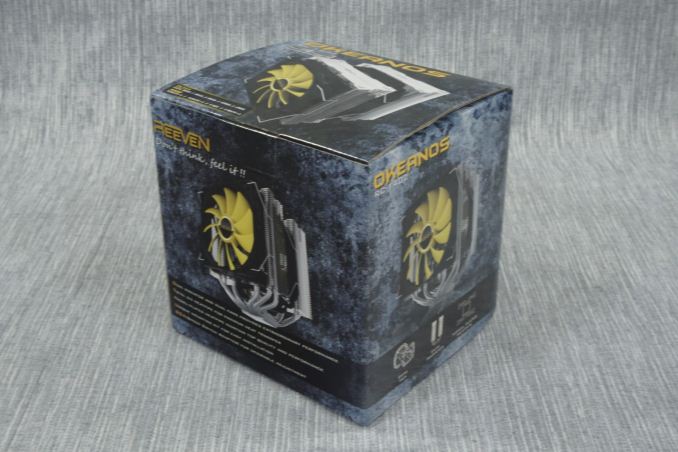
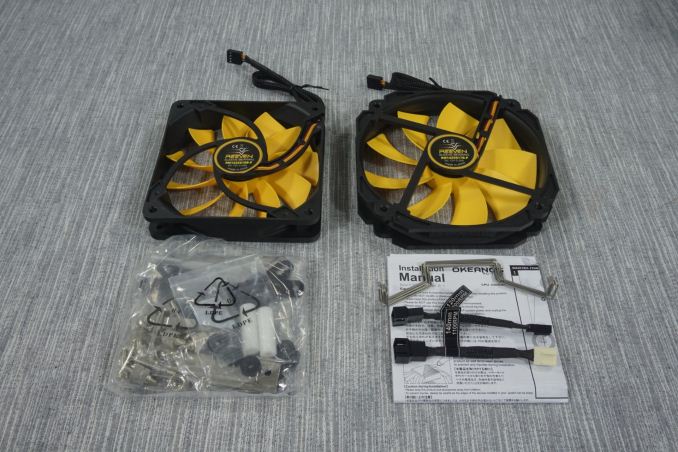
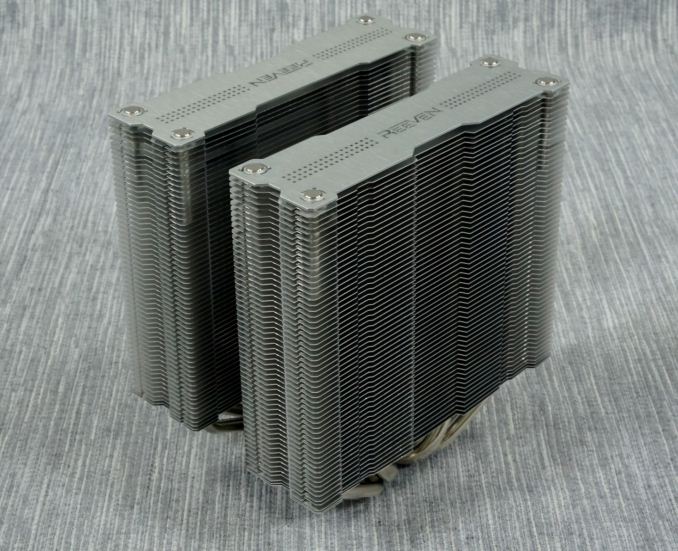
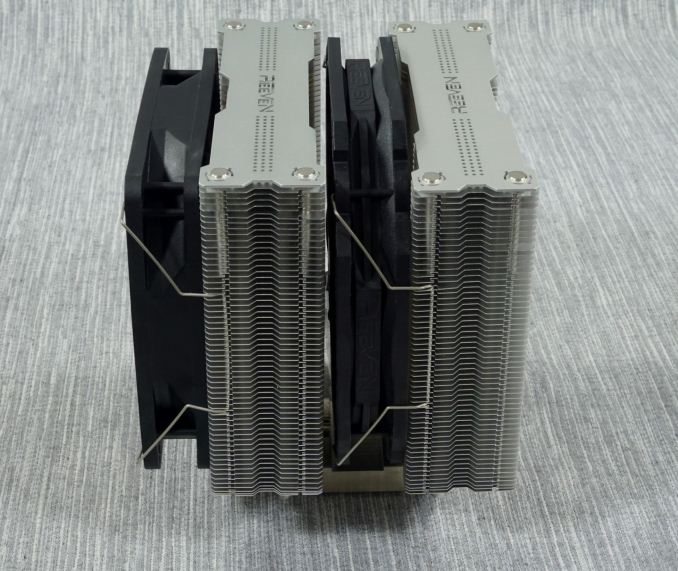
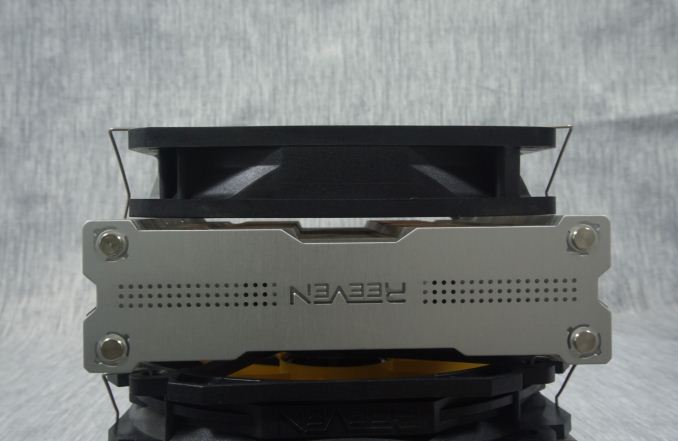
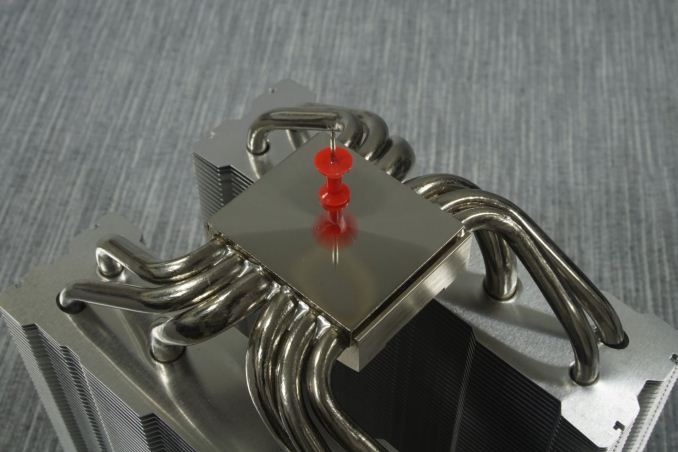








135 Comments
View All Comments
zodiacfml - Tuesday, July 7, 2015 - link
Someone should test for this. It is quite plausible as it will take time to increase the temperature of water/coolant in the system. Yet, for longer and continuous loads, surface area matters to dump heat in the environment which AIO coolers has less to a similarly priced Big Air cooler which shows in benchmarks.Navvie - Tuesday, July 7, 2015 - link
Pretty good.It'd be nice if there was a base line (say intel's current stock cooler) and an AIO water cooler to show the difference between a top tier air cooler and what many consider to be the next step.
One point, SPCR always test each cooler with a 'reference' fan, making it easier to compare the heatsink's efficiency. Can't help but feel you didn't complete the task you set out to by levelling the playing field with your simulated CPU heat source.
maximumGPU - Tuesday, July 7, 2015 - link
Great roundup! i for one still believe high end air a good alternative to water if you want dead silence.What i still can't understand is how can Nocuta get away with shipping the most expensive air cooler, likely to be used by enthusiasts who care about aesthetics, with the most hideous fan colours?
'nar - Tuesday, July 7, 2015 - link
Noctua colors are odd, but I think it forces you to consider performance more than aesthetics. They do look nice, but not "cool" - no pun in tended.Dead silence basically depends on how much heat you need to dissipate, temperature of ambient air, surface area of fins/radiator, air flow, and heat transfer capability of the cooler. Or more basically, how easily you can transfer heat from CPU to the air. Water increases the efficiency of heat transfer, so once you reach a certain power level they will overtake HSF's. They will never be as quite as a good HSF, at least not on low-power CPU's that arguably do not need anything but the stock cooler to begin with.
xthetenth - Tuesday, July 7, 2015 - link
Noctua gets away with those colors entirely because they're Noctua. Yes they're not pretty colors, but unlike nice bright/garish colors they are an unmistakable sign that they're the best or at least tied for best.piroroadkill - Wednesday, July 8, 2015 - link
Your keyboard seems to have a problem, you've typed "hideous" when clearly "fantastic" would be better. Noctua fans are neat.Beaver M. - Wednesday, July 15, 2015 - link
Well, serious people are more likely to buy Noctua anyway. And no serious user cares about what the fans look like, and even if they did, they would still take the Noctua, since you can CLEARLY see the extremely high quality they are just by looking at them. Windows in cases and other stupid bling bling is for the PC-ricer gang. They only choose after looks anyway, and dont care if their fans make noises from day one.PrinceGaz - Tuesday, July 7, 2015 - link
Excellent review of what seem to be very good HSFs throughout (but then again, you did ask them to send their best).A comparison with the stock Intel cooler as supplied with something like the 4790K would be nice, as that is what any expense on a third-party cooler must be compared against. How would the stock-cooler compare at 340W? I was very impressed with the degC/W figures for all those coolers; it almost makes 340W seem an amount of heat that can be dealt with, though I'm thinking it's crazy.
As well as the stock-cooler from a highish end CPU, one or two commonly used AIO liquid-coolers needs to be added to provided a second comparison point, as these high-end air-coolers are presumably expected to be near, possibly even better than a liquid AIO.
I love the fact you are using a properly designed heating rig, and your comprehensive review, but I came away thinking: they're good! But I've no idea how much better they are than the stock cooler, or how any of them would compare with the liquid AIOs also available, both in terms of cooling or noise.
Sivar - Tuesday, July 7, 2015 - link
This is probably the best CPU cooler article I've read (and I read such articles when Anandtech when it was on Geocities).Excellent writing, useful measurements, and a cogent conclusion. Thank you, Emmanouil!
orangesky - Tuesday, July 7, 2015 - link
SilentPcReview just posted a review of the new Scythe Ninja 4: http://www.silentpcreview.com/article1462-page1.ht... The review includes some good comparison tables with many of the popular air & water coolers.Sounds like a pretty decent option, and probably the best Ninja since the original.